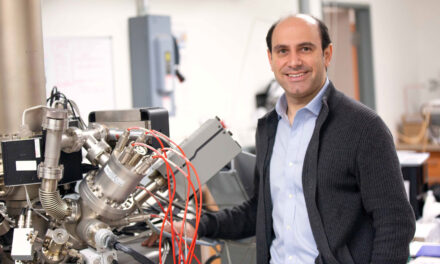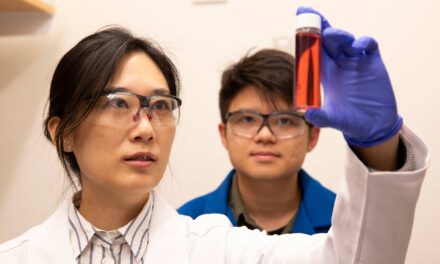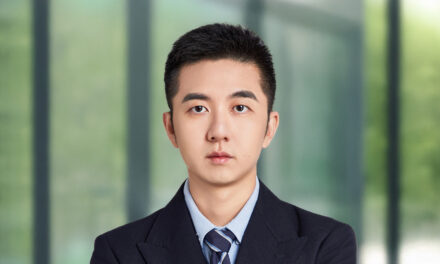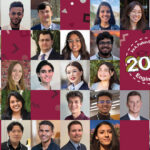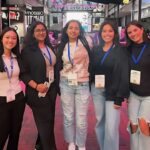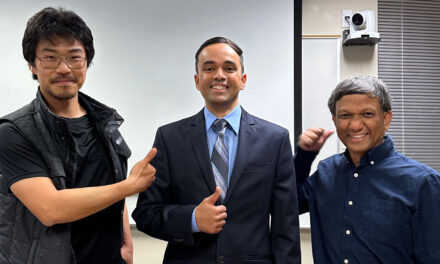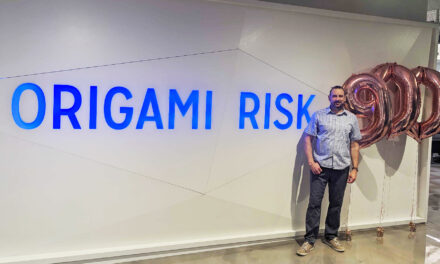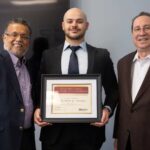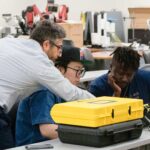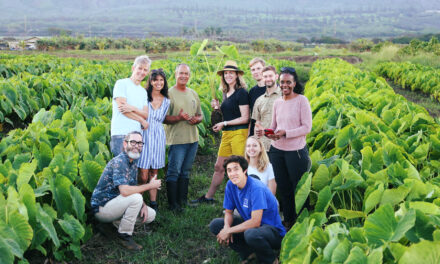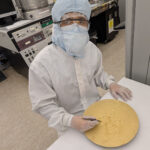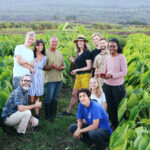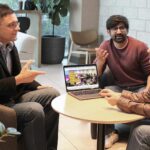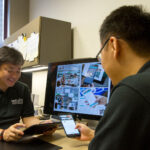
ASU, Phoenix Children’s Hospital expand biomedical research partnership
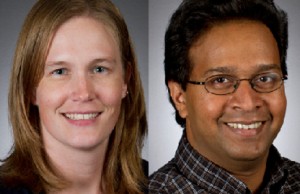
ASU biomedical engineers Sarah Stabenfeldt and Vikram Kodibagkar will team with colleagues at the Barrow Neurological Institute at Phoenix Children’s Hospital.Stabenfeldt will do research on brain injuries with neurotrauma expert Jonathan Lifshitz. Kodibagkar will work with neurosurgeon Ratan Bhardwaj on cures for brain tumors. Photos: Jessica Slater/ASU
Posted February 1, 2013
Research to seek a cure for malignant brain tumors and more precise diagnoses of acute brain injuries will be the focus of collaborations between Arizona State University biomedical engineers and clinician-scientists at the Barrow Neurological Institute at Phoenix Children’s Hospital.
The projects are being funded by two $30,000 awards from a seed grant program recently established by Barrow at Phoenix Children’s Hospital and the School of Biological and Health Systems Engineering, one of ASU’s Ira A. Fulton Schools of Engineering.
The program’s goal is to promote interdisciplinary collaborations between ASU biomedical engineers and clinical faculty at Phoenix Children’s Hospital that will target high-priority medical challenges, including but not limited to biomarker discovery and validation for nervous system disorders, development of medical devices and the comparative effectiveness of treatments for neurological and musculoskeletal disorders.
One of the projects will team ASU assistant biomedical engineering professor Sarah Stabenfeldt with Jonathan Lifshitz, director of the Barrow at Phoenix Children’s Hospital Translational Neurotrauma Research Program.
The other project will be led by ASU assistant biomedical engineering professor Vikram Kodibagkar and Ratan Bhardwaj, pediatric neurosurgeon at Barrow at Phoenix Children’s Hospital.
Identifying biomarkers
Stabenfeldt and Lifshitz will explore the complex network of biomolecules – called the extracellular matrix – that support the structure of the nervous system and its integration with the body’s vascular system.
In cases of injury such as traumatic brain injury, the extracurricular matrix could be disturbed and impair neurological function. Their project will uncover the extent of changes the extracellular matrix undergoes after acute brain injury.
They will then correlate the molecular changes with neurological functions, with the intent for changes in the extracurricular matrix to serve as indicators (or “biomarkers”) of severe brain injuries.
Harnessing regenerative abilities
Kodibagkar and Bhardwaj will explore a possible cure for malignant brain tumors based on fundamental processes involved in the body’s own immune system.
They plan to develop a personalized vaccine capable of finding and killing malignant cells while leaving normal brain cells unharmed.
They are proposing experiments to test the strategy, which involves monitoring tumor growth and the response to the immunotherapy method using Magnetic Resonance Imaging (MRI).
Kodibagkar and Bhardwaj will also employ a highly specialized MRI technique, Diffusion Tensor Tractography, to visualize changes in white-matter tracts in the vicinity of tumors as this therapy method is employed.
They will aim to translate the pre-clinical results into a safe and efficient path for clinical studies, with the hope of harnessing the regenerative capabilities of body’s immune system to safely and effectively kill brain tumor cells.
Greg Turner will collaborate with Kodibagkar and Bhardwaj on the project. He is director of operations for the Barrow-ASU Center for Preclinical Imaging and an expert on functional brain imaging.
Strengthening connections
In early 2014 the two research teams are to present results of their pilot projects to officials of Barrow at PCH and the School of Biological and Health Systems Engineering. The reports are to include additional research goals for proposals to seek funding from federal agencies, including the National Institutes of Health and the Department of Defense.
“We already have successful connections with Phoenix Children’s Hospital. But with the level of expertise of our biomedical engineering faculty at ASU and the hospital’s clinicians and scientists, we thought we had the potential to accomplish more,” says Marco Santello, director of the School of Biological and Health Systems Engineering.
Santello says he and Barrow at Phoenix Children’s Hospital director P. David Adelson, M.D., proposed the seed grant program “as a way to be proactive about expanding these collaborations.”
They brought the idea to Paul Westerhoff, the engineering schools’ associate dean of research, who helped secure funding from the dean’s office.
Media Contact:
Joe Kullman, [email protected]
(480) 965-8122
Ira A. Fulton Schools of Engineering


